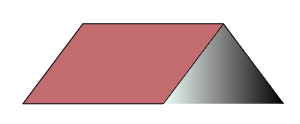buy to let mortgages
Buy to let Investment Property
Information on this site is for information purposes only. It is not intended as investment advice
Buy to let as an Investment
Buying to let is an investment.
Like any other investment you need to consider the risk and the return
It is best viewed as a long term investment. This is because house prices can go down as well as up and if you had to sell in the short term you might lose money.
There is no fixed term to this sort of investment. You can sell the property at any time. Alternatively you could clear the mortgage and retain the property as a source of income.
Buying property to let can be used to increase your pension income.
If you buy or own a property outright then the net rental income would be the return on your investment.
Net rate of return % = (rental income less operating expenses / purchase price) x 100%
Nationally the figure for rate of return is about 7%. This compares favourably with interest bearing accounts however this figure ignores mortgage payments and there is a much lower risk to your capital with interest bearing accounts.
If we now enter your mortgage interest payments as an operating expense into the above formula. The net rate of return reduces considerably. The above formula does not take into account any increase in the capital value of your property over time.
The rates of return in your selected area may differ and you should complete your own calculation.
Please bear in mind that rental income is taxable, at your highest rate of income tax. Please see Buy to let taxation for a discussion of taxation
Few people will have the resources to buy outright. Most people will opt to borrow the majority of the purchase price by taking out a mortgage
Capital Gearing
Buying a property with a mortgage will expose you to ‘capital gearing’.
If you buy a property for £100,000 with a £25,000 deposit, and the capital value increases to £110,000 after 2 years, you could sell up and redeem your mortgage of £75,000 leaving you with £35,000.
Your initial investment of £25,000 has increased to £35,000; an increase of 40% over 2 years or approximately 20% p.a. (ignoring the costs of buying and selling and compound interest etc)
The above example demonstrates capital gearing, how your deposit investment of £25,000 benefits from price rises in the full value of the property.
TAKE CARE Capital gearing works both ways. In a falling market you could stand to lose more than your deposit if your property falls into negative equity AND you find it necessary to sell
